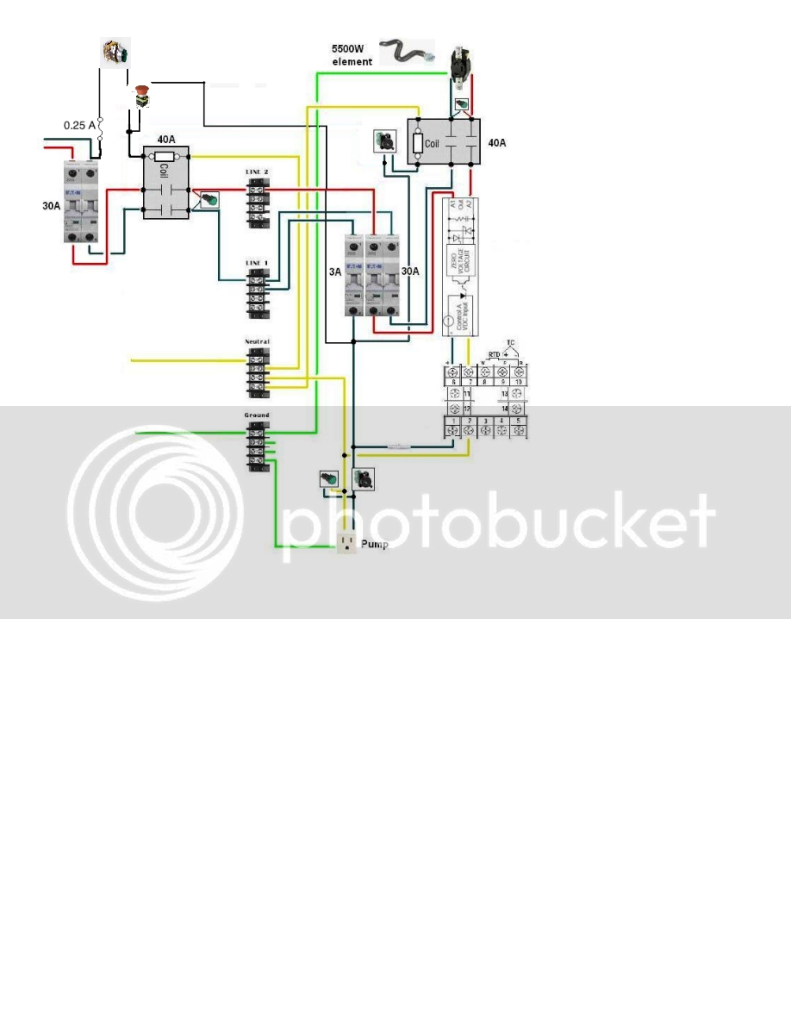The 50A contactor I got from ebay cost about $44, it's a ST3P. You can get a 40A from Auber that's STDP for $18. I originally went with the 50A as an "in case" thing, as there's a 50A circuit that I might be brewing on in the future. I was planning on retaining the ability to run both elements at the same time with a bit of rewiring. If you don't see yourself ever switching to a 50A circuit then I would go with the 30 or 40 A from Auber and add a 30 or 40 A breaker before it. One thing to keep in mind with this is that you will only be controlling the two hot legs, the neutral won't be switched by the contactor. Lots of guys here run like that, but it's a decision you should think through yourself (2P or 3P main power contactor).
The B, C, or D refers to a combination of overcurrent and time, but basically, the B curve will trip fastest on a smaller overcurrent, where the D curve will trip slowest on a larger overcurrent. For inductive loads (pump motors in our case) you want to go with a D curve, for resistive loads (PID's, lights and such) you want a B curve. For the elements I went with C curve, but really probably should have been B curve since these are straight resistive loads.
For the momentary PB you would take power through a small fuse at the incoming terminal of your power contactor, wire that through the PB, then to the line in side of the coil. Then you would run power from the protected side of the breaker powering your PID, through your estop, and again to the line in side of the coil. The way it works is when the PB is pressed the coil is energized, closing the contacts and providing power to your breakers. Now that the breakers are powered, the branch running through your estop is providing power to the main contactor's coil, keeping the contactor latched, even after you release the momentary PB. To shut the system down you hit the estop. This breaks the connection and drops power to the contactor's coil, opening it's contacts, and shutting power off to the entire system. Similarly, if the system was powered up and the cord gets unplugged or the power goes out, the contactor drops out, so the system will not start up again until power is restored AND you hit the momentary PB. If you want to retain the key lock, get a spring return one and wire it in instead of the momentary PB.
The switch that you have could function as a system off, but an estop is a big red or yellow mushroom style PB. In a true emergency it is a lot easier to slap a 40mm mushroom PB than to reach over and turn a key. Also, I highly suggest you go with a twist release or even a key release for this. They take a conscious effort to reset, whereas a simple push/pull is easier to accidentally reset. The idea behind using an estop is that it takes no significant thought or motor skills to shut the system off in an emergency.
If this helps check out my wiring diagram
here. The estop and power on circuits are shown in the upper left. You can ignore the RIMS/off/BK and Pump switches if you don't want to include them. They are simply additional NC contact blocks wired onto those particular switches so that the system cannot be turned on when power is provided to either element or the pump. If you want to include these too, check out Kal's page on the safe start interlock at the electric brewery.com. I got the idea for my safe start interlock from him, so all credit belongs there.






 I should have probably put your name as a source in the diagram. Credit should be given where it is deserved.
I should have probably put your name as a source in the diagram. Credit should be given where it is deserved.



